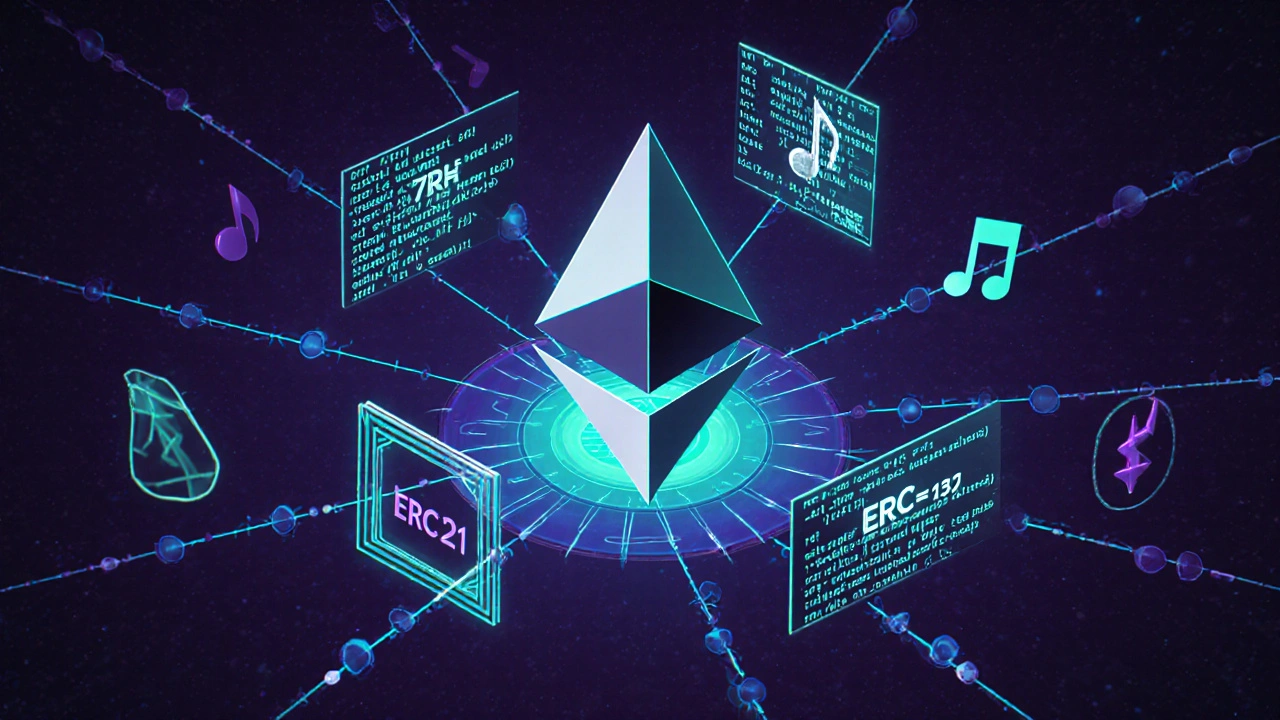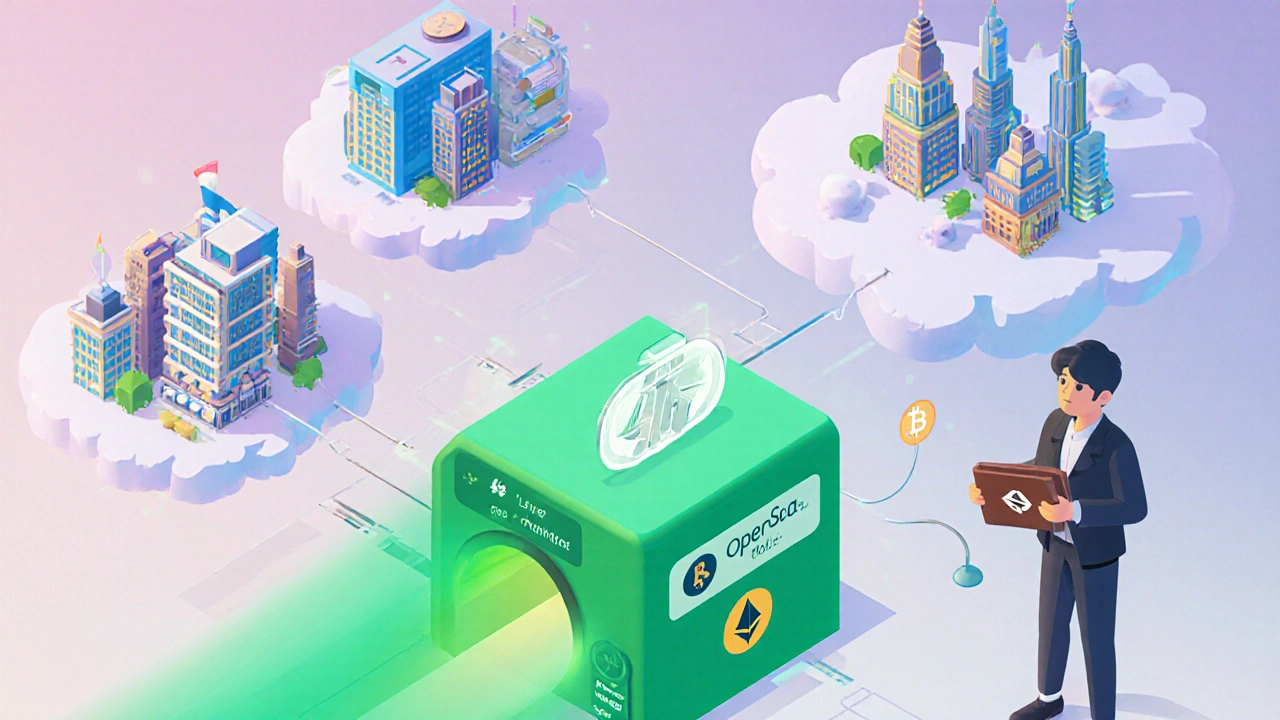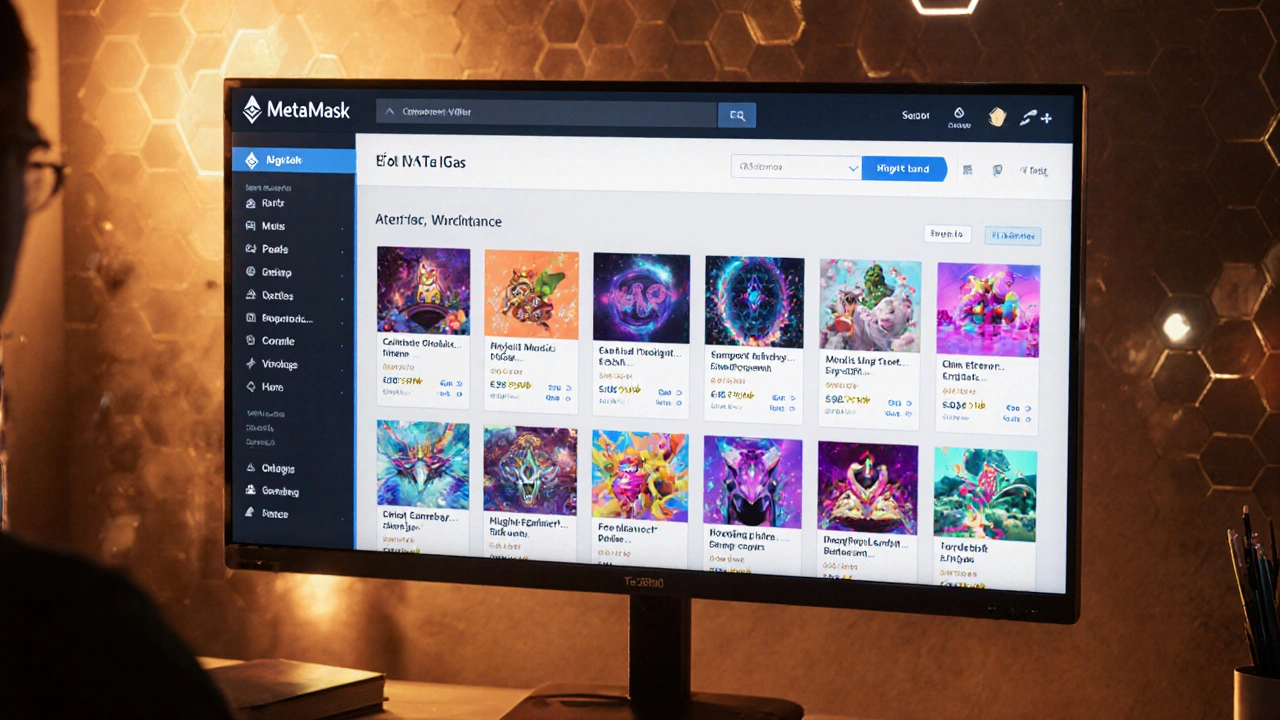Ever wonder where you can actually buy, sell, or trade those digital art pieces and collectibles that everyone’s talking about? The answer lives in an NFT marketplace on Ethereum a specialized online platform where non‑fungible tokens (NFTs) minted on the Ethereum blockchain are listed, bought, and sold. This guide walks you through what that means, how the tech works, and what you need to get started.
What is an NFT?
An NFT a non‑fungible token that represents a unique digital asset, such as artwork, music, or even a virtual land parcel is a piece of data stored on a blockchain that can’t be duplicated. Unlike Bitcoin or Ether, each NFT has its own identifier and metadata, making it one‑of‑a‑kind.
How NFTs work on Ethereum
Ethereum is the most common blockchain a decentralized ledger that records transactions in a secure and immutable way for NFTs because it supports programmable Smart contracts self‑executing code that runs when predefined conditions are met. When you mint an NFT, a smart contract records the token’s ownership, metadata, and token standard-usually ERC‑721 a token standard defining unique, indivisible tokens on Ethereum or the newer ERC‑1155 a multi‑token standard that can handle both fungible and non‑fungible items. These standards ensure that wallets, marketplaces, and other services can recognize and interact with the tokens.
What defines an NFT marketplace?
An NFT marketplace is more than a simple storefront. It provides a user interface for browsing listings, a back‑end that reads smart‑contract data, and mechanisms for handling Gas fees the small amount of Ether required to execute transactions on Ethereum. Most platforms also include search filters, royalty settings for creators, and tools for minting new NFTs directly from the site.

Top Ethereum NFT marketplaces
Here’s a quick look at the most popular platforms you’ll encounter. Each has its own vibe, fee structure, and community focus.
| Marketplace | Primary Focus | Creator Royalties | Platform Fee |
|---|---|---|---|
| OpenSea | General‑purpose, wide variety of assets | Up to 10 % | 2.5 % |
| Rarible | Community‑driven, creator‑centric | 5‑15 % | 2 % |
| Foundation | Curated digital art | 10 % | 15 % (first sale) |
| Zora | Open‑source, decentralized | Variable, set by creator | 0 % (protocol‑level fees only) |
Key components and fees
- Gas fee: Paid in Ether, varies with network congestion. Minting, listing, and transferring each consume gas.
- Marketplace fee: Usually a percentage of the sale price that goes to the platform.
- Creator royalty: A percentage set by the artist that automatically pays on every secondary sale.
- Wallet integration: You need a compatible Wallet software like MetaMask that stores your private keys and interacts with Ethereum dApps to sign transactions.

How to start buying and selling
- Set up a Wallet (e.g., MetaMask) and fund it with some Ether to cover gas.
- Choose a marketplace-OpenSea is a good all‑rounder for beginners.
- Connect your wallet to the platform; the site will ask for permission to view your address.
- Browse listings or mint your own NFT using the platform’s “Create” button. Follow the prompts to upload media, add metadata, and select a token standard (ERC‑721 or ERC‑1155).
- Confirm the transaction in your wallet. The smart contract will lock the token to your address and publish the listing.
- When you receive an offer, click “Accept” and sign the transaction. The buyer’s Ether (minus fees) transfers to you, and the token’s ownership updates on-chain.
Challenges and future trends
Ethereum’s popularity brings both benefits and headaches. High gas costs can make low‑price NFTs unprofitable, and the network’s occasional congestion slows down minting. Solutions like Layer‑2 rollups (e.g., Optimism, Arbitrum) aim to cut fees while staying compatible with existing ERC standards.
Another hot trend is the rise of “lazy minting,” where the NFT isn’t written to the blockchain until the first sale, saving the creator upfront gas. Expect more marketplaces to support this model alongside greener initiatives such as carbon‑offset programs.
Lastly, the legal landscape is evolving. Some jurisdictions are beginning to treat NFTs as securities, which could affect royalty structures and marketplace compliance. Keeping an eye on regulatory updates will be essential for serious collectors and creators.
Frequently Asked Questions
What makes an NFT different from a regular cryptocurrency?
Cryptocurrencies like Ether are fungible-each unit is identical. NFTs are unique, each carrying its own metadata and ownership record, which is why they’re ideal for digital art and collectibles.
Do I need to own Ether to buy an NFT?
Yes, because all transactions-including the purchase, listing, and gas fees-are settled in Ether on the Ethereum network.
Can I list an NFT on multiple marketplaces?
Absolutely. Since the token lives on the blockchain, you can list it on any platform that supports the same token standard. Just be aware of each site’s fee structure.
What are the risks of buying NFTs?
Prices can be volatile, and the market is still speculative. High gas fees can also eat into profits, especially for low‑value items. Always research the creator and the platform before spending.
How does a creator earn royalties on secondary sales?
When an NFT is minted, the smart contract can include a royalty clause. Each time the token changes hands, a percentage of the sale price is automatically sent to the creator’s wallet.


12 Responses
Wow, another guide on NFT marketplaces-just what the internet needed! If you’re still reading, congratulations on your stamina; now go mint something and watch those gas fees melt your wallet… in a totally uplifting way.
One must contemplate, dear reader, the very essence of digital scarcity; indeed, the blockchain serves not merely as ledger, but as philosophical altar, wherein each token is an offering-unique, immutable, eternally noted. Yet, consider the paradox: we chase ownership of pixels, while the ether of existence flickers beyond our grasp; is the value intrinsic, or merely projected?
NFTs are just hype; buy carefully.
Honestly, all this talk about NFTs feels like a fad that’ll fade faster than my internet connection on a rainy day.
Allow me, if you will, to indulge in a reverie of the most exquisite and labyrinthine tapestry that is the NFT marketplace, an arena wherein the convergence of art, technology, and capital conspires to forge a new pantheon of digital reverence. It is, undeniably, a crucible wherein creators, once shackled by the caprices of traditional gatekeepers, now ascend to a realm of unfettered expression, unbound by the physical constraints that once limited the dissemination of their work. Within this ether, each token-imbued with the immutable signature of the blockchain-stands as a testament to singularity, a digital analogue to the hand‑crafted masterpiece, yet multiplied infinitely across the ether. The very notion of ownership, once anchored to tangible provenance, has been transmuted into a cryptographic covenant, one that bestows upon the holder not merely a superficial claim, but an irrevocable stake in the lineage of the piece. Moreover, the economics of royalties, enshrined within the smart contract, ensure that the creator continues to partake of the spoils as the work traverses the market, a concept hitherto foreign to the antiquated structures of the art world. One must also consider the sociocultural ramifications: the democratization of access, whereby a nascent artist in any corner of the globe can present their vision to a global audience without the intercession of curatorial arbiters. Yet, this liberation is not without its paradoxes; the specter of gas fees looms like an ever‑present toll, extracting a modest tribute for each transaction, thereby imposing a barrier that may deter the very inclusivity it seeks to champion. In response, the advent of layer‑2 solutions and lazy‑minting mechanisms signpost a horizon where such impediments may be attenuated, ushering in a more egalitarian paradigm. Ultimately, the NFT marketplace on Ethereum stands as a microcosm of our epoch-a synthesis of art, finance, and code-where each transaction is both a monetary exchange and a cultural statement, reverberating through the collective digital conscience.
Honestly, if you’re not aware of how ERC‑721 differs from ERC‑1155, you’re missing the point. The standards are designed to optimise storage and transaction costs, which, let’s be real, most newbies ignore. You should also double‑check gas estimations before minting; otherwise, you’ll end up spendin’ more than you bargained for. And yep, always verify the contract address-phishing attacks are rampant, definatly not something you want to deal with.
Looks solid enough just read the guide and you’ll be fine
Oh, the drama of digital glitter! You spend ether on a pixel and then act like you just bought the Mona Lisa-except the only thing that’s priceless is the ego boost. Congrats on joining the most flamboyant club on the internet; may your NFTs be as eternal as your next overpriced coffee.
People don’t realize the hidden agenda-big tech wants to track every piece of art you own. Once you buy an NFT, they know exactly where you spend your money and can influence your choices. Stay safe.
Great rundown! If you’re just starting out, remember to keep a modest amount of ETH for gas and test the marketplace with a low‑value purchase first. It’s the safest way to get comfortable with the flow.
Really helpful overview. For anyone feeling overwhelmed, try using a Layer‑2 solution like Polygon; it dramatically reduces fees while staying compatible with most Ethereum‑based marketplaces. Happy minting!
Just a quick tip: always double‑check the contract address before confirming a transaction. It can save you from costly mistakes.